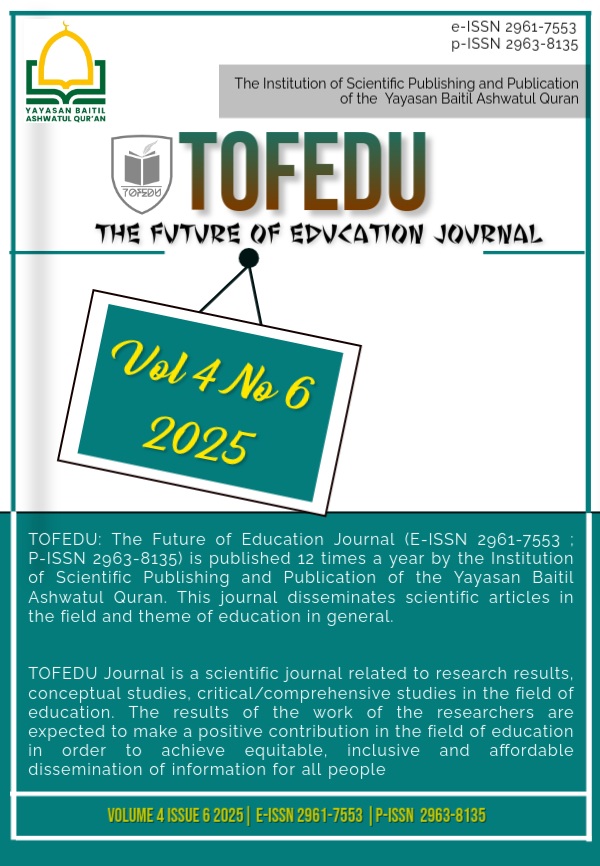The Use of the Problem-Based Learning (PBL) Model to Improve Speed Reading Skills Using the Spreeder Application in Fifth-Grade Students of SDN 02 Situjuh Gadang
Main Article Content
Abstract
Speed reading is an essential skill in facing the challenges of the 21st century, particularly in the era of the Industrial Revolution 4.0 which demands efficiency in acquiring and understanding information. This research was motivated by the low speed reading ability of fifth-grade students at SDN 02 Situjuah Gadang. Therefore, the research problem formulated in this study is how the implementation of the Problem Based Learning (PBL) model assisted by the Spreeder application can improve students’ speed reading skills. The purpose of this study is to describe the process of implementing the PBL model in speed reading instruction, analyze the improvement in students’ speed reading skills, and examine students’ responses to learning using the Spreeder application. This research is based on the theories of Dalman and Tony Buzan, who state that speed reading is a trainable skill to increase reading efficiency without sacrificing comprehension. The method used is Classroom Action Research (CAR), which was carried out in two cycles, each consisting of planning, implementation, observation, and reflection stages. The results showed that the implementation of the PBL model combined with the use of the Spreeder application significantly improved students’ reading speed. All students who initially did not meet the target of reading 100 words per minute in the first cycle were able to reach the target in the second cycle. Thus, it can be concluded that the technology assisted problem-based learning model is effective in improving the speed reading skills of elementary school students.
Article Details

This work is licensed under a Creative Commons Attribution 4.0 International License.
